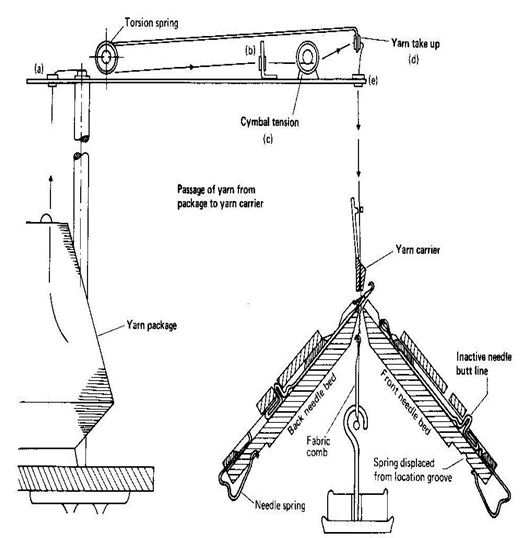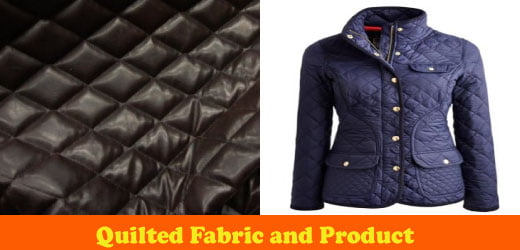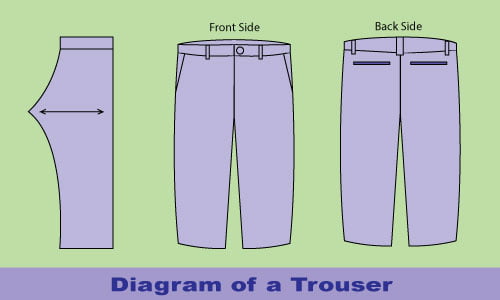An Overview of V-bed (Manual) Knitting Machine
Last updated on August 25th, 2023 at 09:51 pm
Main Parts
- Yarn package
- Yarn guide
- Tension spring
- Cymbal tension
- Yarn take-up
- Fabric comb
- Yarn carrier
- Back needle bed
- Front needle bed
- Needle spring
- Fabric
- Dead weighting system
- Latch needle
Functions of Different Parts
The functions of different parts are illustrated below in sequence wise.
Yarn guide: it is used to maintain the path of the yarn.
Cymbal tension: it is a spring loaded tensioning device. It is used to maintain the uniform tension of yarn.
Yarn take-up: it is used to take-up the yarn from package at a constant rate.
Yarn carrier: Yarn carrier is used to supply yarn to the needle hook.
Fabric comb and weight system: The whole system is used to take-up the fabric from the knitting zone. Fabric is taken-up between the gaps of the two needle beds.
M/c Description
In the following figure shows a cross section of a simple hand powered and manipulated V-bed rib flat machine. The trick walls are replaced at the needle bed verges by fixed, thinner, polished and specially shaped knock-over bit edges. In rib gating, a knock-over bit in one bed will be aligned opposite to a needle trick in the other bed. During knitting, the edges of the knock-over bits restrain the sinker loops as they pass between the needles and thus assist in the knocking over of the old loops and in the formation of the new loops. The takedown tension and the needles in the other bed help to hold the old loops down on the needle stems as the needles rise to clear.

On hand flat machines, after the first or set up courses of rib is taken by the needles a fabric comb is hand inserted into it, upwards from under the needle beds, so that the eyelet holes of the comb protrude above the course. The comb wire is then inserted through the eyelets over the set up course so that the comb is suspended from the course and a takedown weight is attached to it.
The cover plate is a thin metal blade, located in a slot across the top of the needle bed tricks. It prevents the stems of the needles from pivoting upwards out of the tricks as a result of the fabric take down tension drawing the needle hooks downwards whilst allowing the needles to slide freely in their tricks. The plate can be withdrawn sideways out of the needle bed to allow damaged needles to be replaced.
Supporting the tail of each needle is a security spring that fits over the lower edge of the needle bed. When the spring is pushed fully into position, it locates into a groove on the under surface of the needle bed. The butt of the needle that it supports is then aligned with the knitting cam track on the under surface of the traversing cam carriage. When a needle is not required to be in action, its security spring is not located in the groove so that the needle is nearer to the lower edge of the needle bed and its butt misses the traversing cam-carriage.
On machines employing jacquard selection, the function of the security spring is replaced either by the thrust of a jacquard steel onto the tails of the elements or by the raising or depressing of the knitting butts into the trick in order to position the needle butts for each carriage traverse.
Latch opening brushes are attached to the cam plates of both needle beds to ensure that the needle latches are fully opened. The supports of the brushes are adjustable to ensure precise setting of the bristles relative to the needles.
The cam-carriage either slides or runs on ball bearings or wheels, along guide rails, one of which is fixed over the lower end of each needle bed. It is propelled either by hand or from a motor driven continuous roller chain or rubber belt.
Each yarn carrier is attached to a block which slides along a bar, which, like the carriage guide rails, passes across the full width of the machine. The carrier bar may be of the prism type so that yarn carriers may be attached to slide along both the front and the back surfaces. The yarn carriers are picked up or left behind by the carriage, as required, by means of driving bolts or pistons that are attached to and controlled either manually or automatically from the carriage bow. There is a bolt for each carrier bar track that, when lowered, entrains with a groove in the shoulder of a yarn carrier block. Stop plates having inclined edges are positioned on the carrier bars at the knitting selvedges. On contact with a stop plate, the base base of the bolt rises and is lifted out and disconnected from the groove of the carrier block so that the carriage continues its traverse without the carrier.
Two levers are usually provided, one at each end of the needle bed. One is for racking the back needle bed, to change the gating of the needle beds for changes of rib set out or rib loop transfer. The other is to open the gap between the needle beds for easier access to the knitted fabric hanging from the needles.
Cam System of the V-bed Hand Flat M/C
The following figure illustrates the knitting action of a V-bed hand flat machine and another figure shows the underside of the cam carriage and the cams forming the tracks that guide the needle butts through the knitting system. The single knitting system cam box is symmetrically designed for knitting a course of loops on both the front bed and back bed needles during a right to left traverse and a second course during the return left to right cam box traverse.

The needle butts will enter the traversing cam system from the right during a left to right carriage traverse and from the left during a right to left traverse. For each needle bed there are two raising cams (R), two cardigan cams (C) and two stitch cams (S).
In the direction of traverse, the leading raising cam is responsible for knitting and the trailing raising cam acts as guard cam. The leading stitch cam is raised out of action and the trailing stitch cam is in operation. In the reverse direction of traverse, the roles of the two raising cams and of the two stitch cams are reversed.
A raising cam lifts the needle to tuck height but if the cardigan cam above it is in action the needle is lifted to full clearing height. Thus, the cardigan cam is taken out of action if a tuck stitch is required. To produce a miss stitch, both the raising cam and the cardigan cam are out of action. To produce a course of tubular plain knitting, a pair of raising cams that are diagonally opposite each other in each bed (RL and RR) are out of action.
The arrangement as shown in the following figure is referred to as a knitting system. A single system machine will knit one course of rib in one traverse whereas a double system machine will knit two courses of rib per traverse. Sometimes a set of cams in one bed is referred to as a lock.
A (L) – Raising cam (left)
B (R) – Raising cam (right)
C – Tuck cam (left & right)
D (L) – stitch cam (left)
D (R) – stitch cam (right)
E – Guard cam
Description of the Cam Changing Mechanism
The cam system of this machine is traversing cam system. It has two cam boxes. Each contains two sets of cam. In the direction of the movement one cam system of cam box is acted on the needle butt and the other cam system is acted as guard cam. In the direction of traverse the leading raising cam is responsible for knitting and the trailing raising cam acts as a guard cam. The leading stitch cam is raised out of action and the trailing stitch cam is in operation. In the reverse direction of traverse the rotes of two raising cams and of the two stitch cams are reversed. Each cam of the cam box is operated by nobs. The nobs have three different positions. They are –
1. Fully inactive
2. Active
3. Half active.
The operation or formation of different loops by changing the position of cams is illustrated below:-
Knit loop: when all cams are fully active then long & short butt needle products knit loop.
Miss & knit loop: when raising cams are half active then all short butt needle products miss loop & all long butt needle produces knit loop.
Tuck & knit loop: when tuck cams are fully active. Then all needle produces knit loop. When tuck cams are half active the long butt needle produces tuck loop and the short butt needle produces knit loop.
All tuck loop: when raising cams are half active and tuck cams are also half-active the short butt needle produces tuck loop.
The Knitting Action of the V-bed Hand Flat M/C
Numbers 1 to 4 below correspond to the numbers in the knitting action illustrations, assuming a carriage traverse from left to right. Similar positions may be plotted for the return traverse, using the cams given an (L) designation to provide the positive movements.

The rest position: The tops of the heads of the needles are level with the edge of the knock over bits. The butts of the needles assume a straight line until contacting the raising cams R (R) because the leading stitch cams S and AS (L) are lifted to an inactive position. The lifting action is an alternating action that always lowers the trailing stitch cams and raises the leading stitch cams in each system as the traverse commences. This action prevents needles from being unnecessarily lowered and strain being placed on the old loops prior to the startup of the knitting action.
Clearing: The needle butts are lifted as they contact the leading edge of cams R (R), which raises the needles to ‘tucking in the hook’ height with the undersurface of cams S (L) acting as guard cams. The needles are lifted to full clearing height as their butts pass over the top of cardigan cams C (R) and C (L).
Yarn feeding: The yarn is fed as the needles descend under the control of guard cam (G). The required loop length is drawn by latch needle as it descends the stitch cam S (R).
Knocking over: To produce synchronized knocking over of both needle beds simultaneously, the stitch cam S (R) in the front system is set lower than the auxiliary stitch cam AS (R), so that the latter is rendered ineffective. If, however, delayed timing of the knock over is employed, knock over in the front bed will occur after knock over in the back bed. In this case, stitch cam S (R) is not set as low as (R) so that the depth setting of the latter can produces the knock over action. Delayed timing is only normally used on gauges finer than 8npi and cannot be used for broad ribs.
You may also like: An Overview of Different Types of Lightweight Fabric




Is machine ka price kya hai
Brother,Its just a blog site. We don't sell any product.We just give information.
Do you have a spam issue on this website; I also am a blogger, and I wanted to know your situation; many of us have developed some nice methods, and we are looking to trade methods with others, why not shoot me an e-mail if interested.
I stumbled upon this post and found it to be a great resource. Thanks for sharing!
Your articles are extremely helpful to me. May I ask for more information?